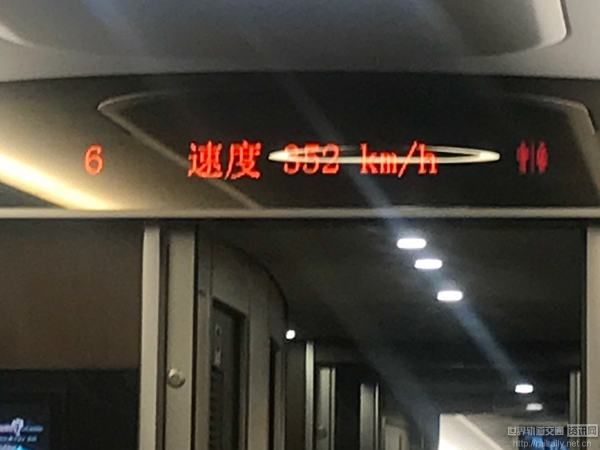Chinese high-speed rail amazes world with “China speed”
2017-10-26 12:53:42
It takes only four hours and a half for Fuxing to travel 1,300 kilometers from Beijing to Shanghai’s Hongqiao Railway Station, which is the busiest among all the train stations in China.
A train would pass the Hongqiao station every 84 seconds on average, even 19 seconds fewer than the departure interval of subways on rush hours.
China’s high-speed rail has experienced rapid development since the country started to run its first 350-kilometres per hour high speed train between Beijing and Tianjin on August 1, 2008.
China has built a high-speed rail network stretching more than 22,000 kilometers over the past five years, averaging 9 kilometers each day. In addition, 484 new high-speed rail stations have been constructed.

Digital screen inside the “Fuxing”, China’s self-developed bullet train, shows the train runs at a speed of 352 kilometers per hour. (Photo by Qiang Wei from People’s Daily)
So far, China has basically built the world’s largest network of high-speed rail with a “four vertical and four horizontal” structure. It is currently working to expand it to “eight vertical and eight horizontal” for a full coverage of the country’s central and western regions.
High-speed rail is a prioritized choice of many Chinese when it comes to medium- and short-distance travels. Connected with subways and light rails, high-speed rail services in many Chinese cities offer the same convenience as the subway does.
To enjoy crosstalk in Tianjin on weekends nowadays is made possible for people living in Beijing, as there are 251 high-speed trains running between the two cities every day.
In addition, China’s bullet trains, with reliable advanced technology, cost-effective performance and rich operation experiences, are going global step by step. Each rail constructed is able to remain qualified for at least 20 years.
For example, Ankara-Istanbul line in Turkey, the first China-constructed high-speed rail for a foreign country, started operation in 2014. The high-speed railway linking Indonesian capital Jakarta to Bandung has also become a name card for China’s construction of the Belt and Road initiative.
It is predicted that in the coming years, more bullet trains produced by China with independent technologies and in accordance with Chinese standards will be running across the world.
